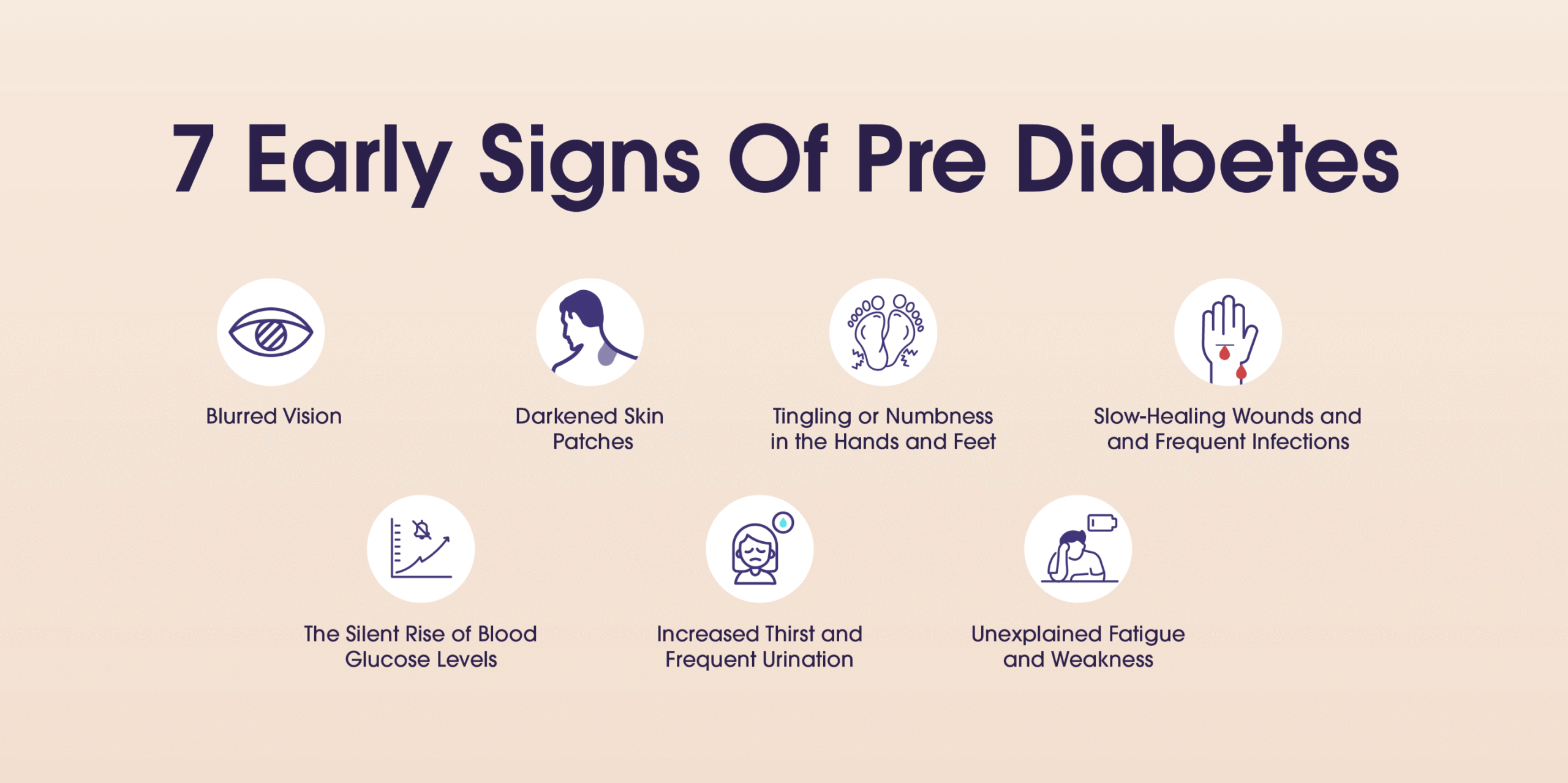Don’t Wait Until It’s Too Late — These Silent Symptoms Could Be Warning You About Pre-Diabetes
Prediabetes is affecting millions globally — often working silently in the background. According to 2021 statistics, around 541 million people worldwide are living with prediabetes, and this number could skyrocket to 730 million by 2045. The earlier you catch the warning signs, the better your chances of stopping this preventable condition from turning into type 2 diabetes.

Let’s explore seven often-overlooked pre-diabetes symptoms and learn how to recognize them before it’s too late.
What Is Prediabetes?
Prediabetes is when your blood sugar levels are higher than normal, but not high enough to be diagnosed as diabetes. This is the stage where preventive measures can truly work. If not addressed, it could lead to:
-
Type 2 diabetes
-
Heart disease
-
Kidney problems
-
Nerve damage
🩺 7 Subtle but Serious Symptoms of Pre-Diabetes
1. Darkened Skin in Specific Areas
➤ Watch Out For:
-
Dark, velvety skin patches on the neck, armpits, or groin
This condition is called Acanthosis Nigricans, and it’s an early signal that your body is becoming insulin resistant.
📌 Why it matters: Insulin resistance is one of the foundational signs of pre-diabetes.
2. Unusual Thirst and Frequent Urination
➤ Key Signs:
-
Drinking more water than usual
-
Needing to urinate frequently, especially at night
High blood sugar forces the kidneys to work harder, drawing more water from the body and creating constant thirst. This is often misattributed to heat or other random factors.
3. Slow Wound Healing
➤ What to Notice:
-
Minor cuts or bruises take a longer time to heal
-
Skin infections that linger
Elevated glucose levels weaken the immune system and reduce blood flow, particularly to extremities, leading to patches or sores that don’t heal as expected.
4. Blurred or Fluctuating Vision
➤ Symptoms May Include:
-
Blurry or fuzzy vision
-
Trouble focusing, especially during the day
Changes in blood sugar lead to fluid shifts in the eyes, causing temporary changes in your vision. You may mistake this for eye strain or tiredness.
5. Tingling or Numbness in Hands and Feet
➤ The Medical Term:
Peripheral Neuropathy
This happens because of nerve damage caused by excess sugar in the bloodstream. It often starts out mild but can worsen over time if left untreated.
6. Unexplained Fatigue
➤ The Red Flag:
-
Feeling drained even after a good night’s sleep
Your body struggles to use glucose efficiently when blood sugar is imbalanced, leading to constant low energy levels.
👉 If fatigue is combined with other symptoms on this list, it’s time to see your doctor.
7. Sudden Weight Fluctuations
➤ Look Out For:
-
Losing weight without exercising or dieting
-
Gaining weight rapidly, especially around the belly
Prediabetes can impair how insulin manages sugar and fat, leading to unintended weight changes. Any unexplained shift in your weight should prompt a blood sugar check.
🎯 What Increases the Risk of Pre-Diabetes?
You may be at higher risk if you:
-
Have a family history of diabetes
-
Are overweight or obese
-
Live a sedentary lifestyle
-
Are over 35
-
Have high blood pressure or high cholesterol
-
Eat a low-fiber, high-carb diet
🩺 How to Get Tested
If you’ve noticed these symptoms, consult a doctor and get tested using:
-
Fasting Blood Sugar (FBS)
-
HbA1c (Glycated hemoglobin)
-
Oral Glucose Tolerance Test (OGTT)
🛡️ Can Prediabetes Be Reversed?
Yes — with lifestyle changes.
Many people successfully reverse their prediabetes by taking charge of their health early.
Simple Steps to Start:
-
Walk 30–45 minutes daily
-
Eat a balanced diet with less sugar and more fiber
-
Get 7–8 hours of sleep
-
Avoid processed foods and sugary drinks
-
Schedule regular health check-ups
✅ Takeaway: Listen to Your Body Before It’s Too Late
If left untreated, prediabetes can silently progress to chronic disease. But the good news is — it’s 100% manageable and even reversible, especially when caught early.
Don’t ignore these early signs. A quick test and small lifestyle adjustments could protect you from long-term complications down the road.